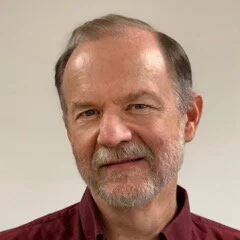Born in 1926, Jacques Villeglé is a major artist of the second half of the 20th century and considered one of the first street artists. He lives and works between Paris and Saint-Malo. He attended the School of Fine Arts in Rennes and Nantes, where he studied architecture. He soon gave up painting and became interested in found objects which he appropriated for his work.
In 1949, he became fascinated by posters and discovering beauty in urban fragments. Having always lived in cities, he was drawn to architecture, colors, typography, and other elements of post-war society. In 1960, Villeglé joined the New Realists with Yves Klein, Arman, and Jean Tinguely as the group turned its gaze on the burgeoning consumer society.
Jacques Villeglé is represented in prestigious collections, including Centre Pompidou, MoMA, and Tate Modern, among others.
This interview has been translated and abridged from French by Sarah Bortel.
JACQUES VILLEGLÉ
There was the war from ‘40 to ‘45 under the Fascists, so I didn’t have art training at that time. The painter Picasso, we knew the name, the artist who painted an eye in the place of a navel, that’s all I knew at the age of seventeen. I found a book published in 1926, the year of my birth, speaking of the painters Braque, Picasso and Miró. And then all the figurative painters at that time, Van Dongen…so it was a new style that I encountered there.
Né en mil neuf cent vingt six, Jacques Villeglé est un artiste majeur de la deuxième moitié du vingtième siècle et est considéré comme l’un des premiers street artists. Il partage son temps entre Paris et Saint-Malo. Il est allé à l’École des Beaux Arts à Rennes et à Nantes, où il a étudié l'architecture. Il a rapidement abandonné la peinture et s'est intéressé aux objets qu’il s’est approprié pour son travail.
À partir de mille neuf cent quarante neuf, il se fascine pour les affiches et la découverte de la beauté dans les débris urbains. Puisqu’il a toujours vécu dans des villes, il est attiré par l'architecture, les couleurs, la typographie, et de la société d’après-guerre. En mille neuf cent soixante, il a rejoint les Nouveaux Réalistes avec Yves Klein, Arman, et Jean Tinguely, où la groupe s’est focalisé sur la société de consommation florissante.
Jacques Villeglé est présent dans les collections prestigieuses au Centre Pompidou, au MoMA, et au Tate Modern, entre autres.
Rues Desprez et Vercingétorix - La Femme, 1966
© D.R., Adagp, Paris, 2008
This interview was conducted by Mia Funk with the participation of collaborating universities and students. Associate Interviews Producer & Translator on this podcast was Sarah Bortel. Digital Media Coordinator is Hannah Story Brown.















































































